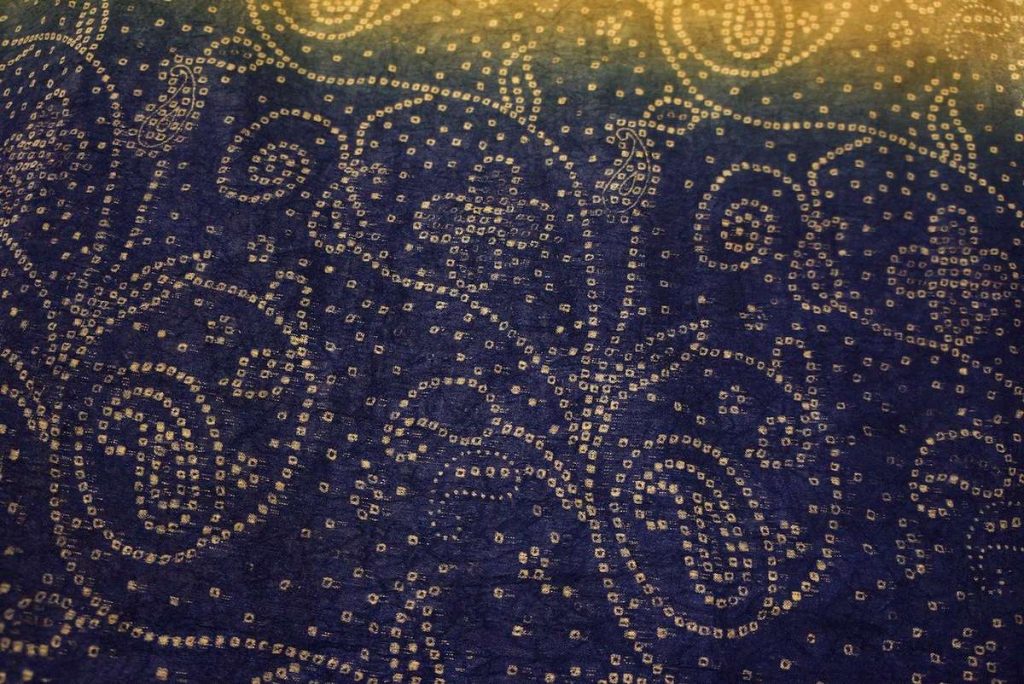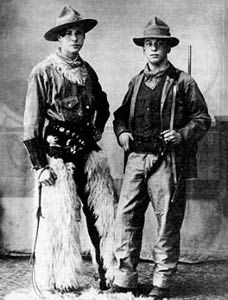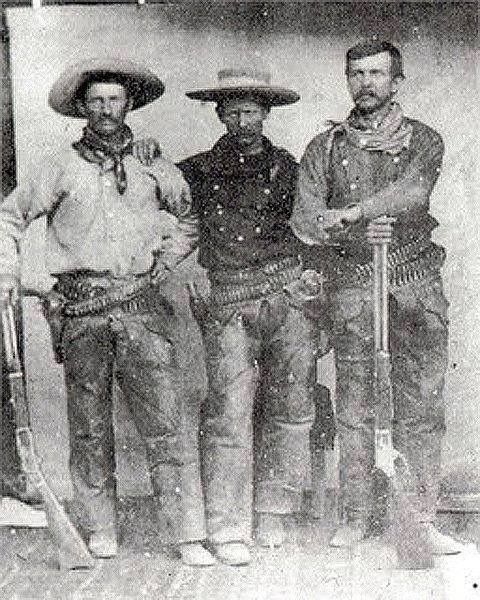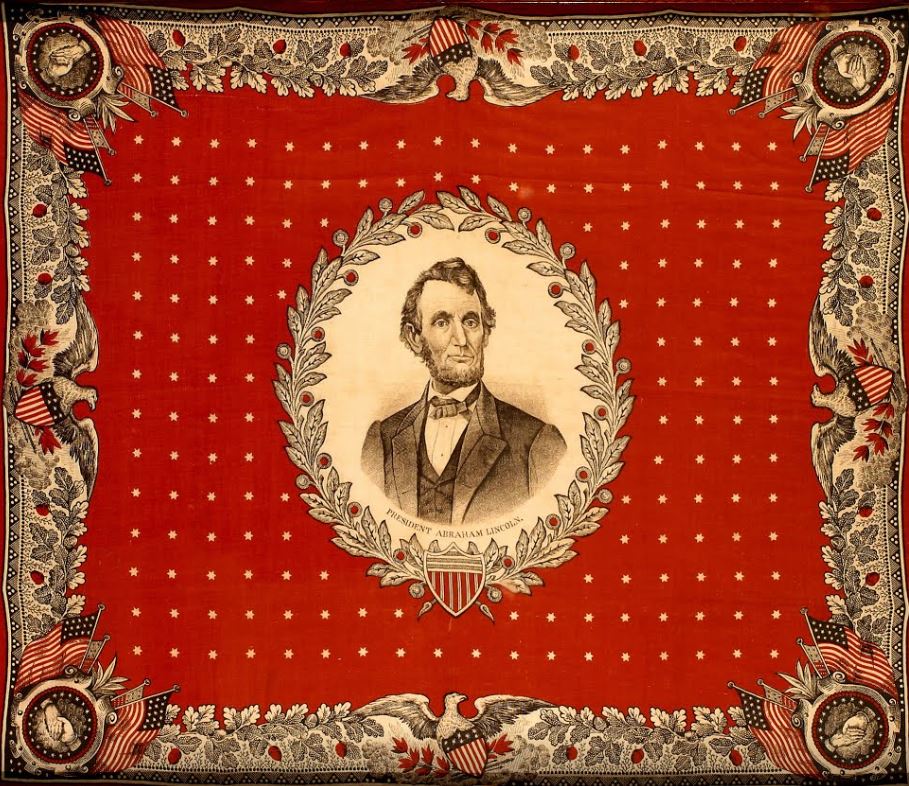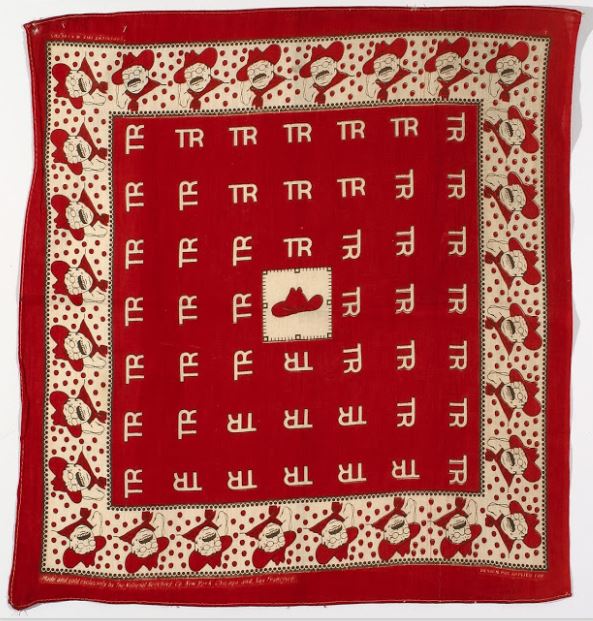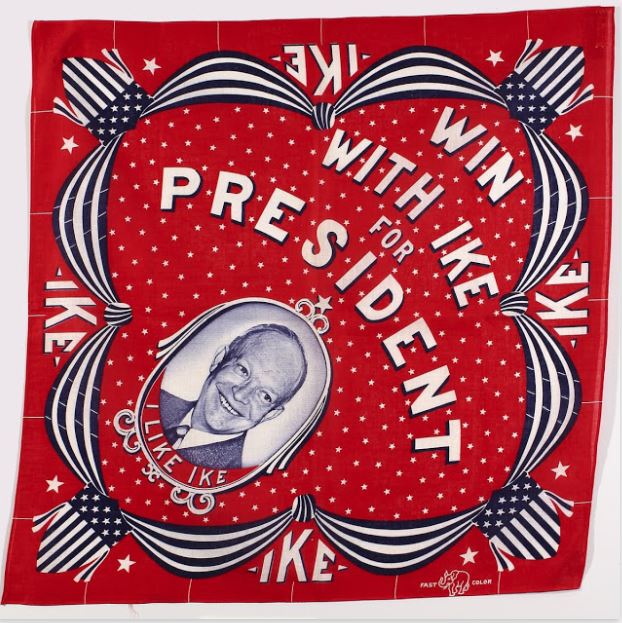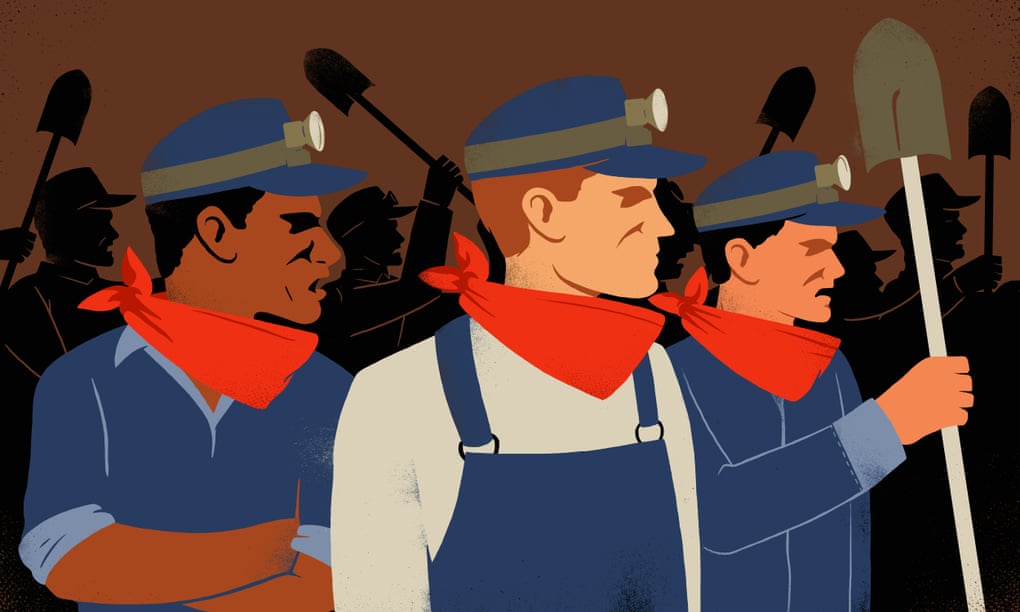The History
The word itself is thought to originate from the sanskrit (ancient Hindi) word ‘badhnati’ which means binds or to tie and has a history that can be traced back to South Asia and the Middle East in the late 17th century. Through colonization and trade, the name found its way into the English dictionary around the mid-eighteenth century. Badhnati was later anglicized into ‘bandannoe’ via Portuguese and eventually it came to be the bandana we know today.
Reminiscent in shape, size and function of the kerchief, which has been in use since ancient Roman and Greek times, the bandana is defined as a printed, square-shaped piece of plain-woven cotton, called cambric (although it could be made of silk). This separates the bandana from its forerunner, which was traditionally made from linen and had less emphasis on prints and colors as opposed to name embroidery and the like.
The bandana has served an important function for generations, worn by the likes of sailors, seafarers, farmers, cowboys, bikers and miners, and its use even extends to the LGBT community, gang members and general rebel culture. And the two-tone paisley-printed cotton cambric cloth has come a long way from the traditional resist dye techniques of Turkey and India, at times representing political campaigns and patriotism, at others, aiding in the promotion of popular culture and other twentieth century advertising.
From Persia to Paisley
You might be surprised that the famous paisley pattern that most of us associate with printed bandanas doesn’t actually come from Paisley, Scotland, but rather the region of Kashmir (once part of the Persian empire).
Paisley is traditionally known as a distinctive, intricate pattern of curved feather-shaped figures, originally based on an Indian pinecone design. Having read a vast amount of speculations in the origins of the paisley, or ‘boteh’ as they call it in Persian, this might not be an entirely accurate description of the pattern.
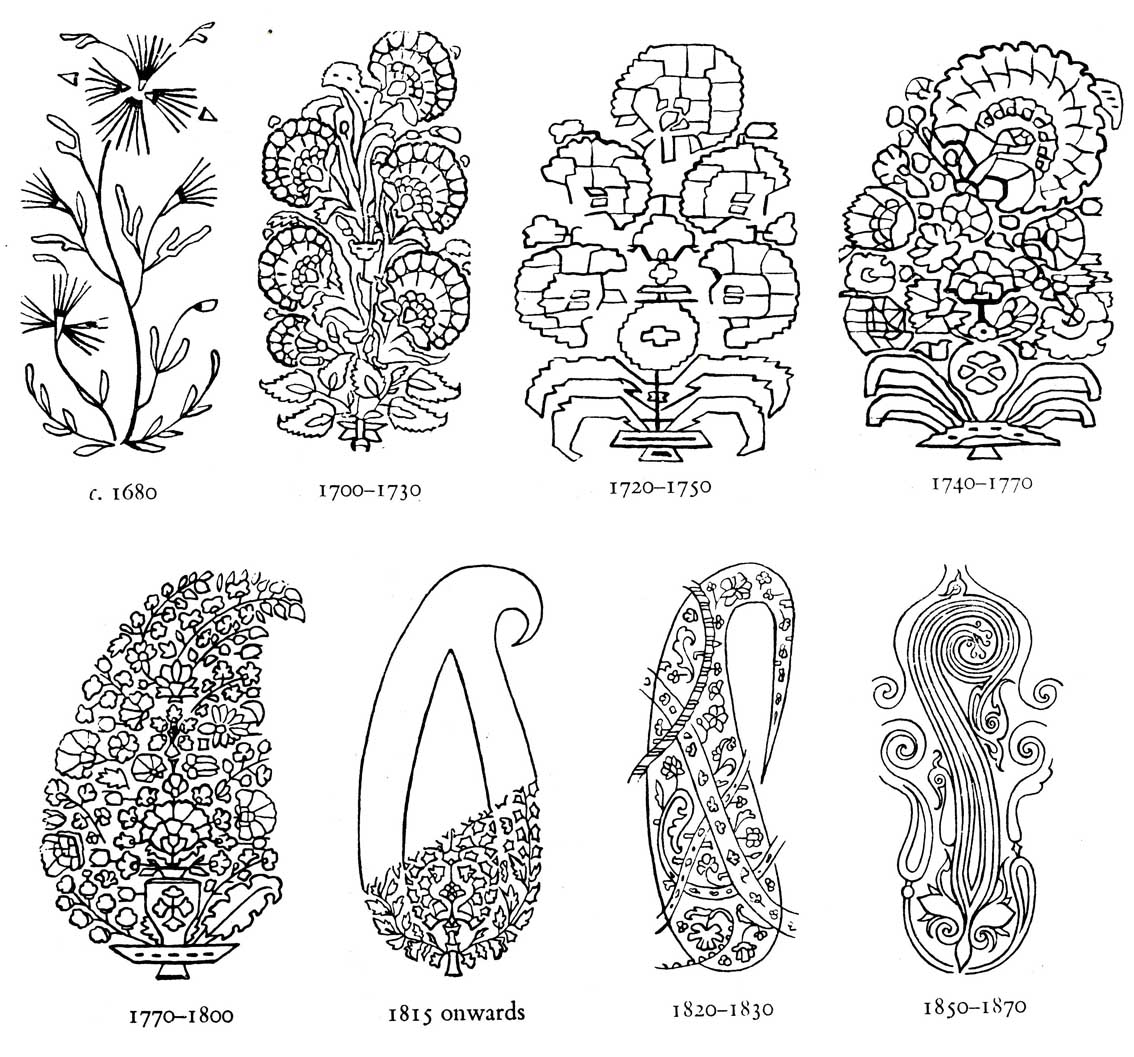
‘The Kashmir Shawl’, John Irwin, Victoria and Albert Museum,1973
Boteh has several meanings in Persian: bush, shrub, a thicket, bramble, herb. Some would even take it to mean a palm leaf, cluster of leaves (perhaps as a repeated pattern) and flower bud. For those looking for a jumping point, the boteh design dates back to over two thousand years ago and, given, Kashmir’s location, it also reached India, where they referred to it as ‘buta’.
Woven cashmere with buta prints were imported to Europe via the Dutch East India company in the eighteenth century, and quickly grew popular. Used as women’s shawls, these printed pieces symbolized great status, but were also quite expensive and eventually demand outgrew supply. Prices increased and thus many European (particularly English and Scottish) companies began to produce their own shawls in these styles.
In Western culture, this lopsided teardrop had many different associations depending on the country. In France, they called it ‘tadpoles’; in Wales they were ‘Welsh pears’; and in America, which was probably the most accurate, they referred to them as ‘Persian pickles’. But it was still the name ‘paisley’ that ended up sticking with the masses as the design spread across the globe.
The invention of the Jacquard loom would shutter many of the Scottish mills weaving Paisley style fabrics, but their dyeing dexterity and chemistry know-how would keep the Scots in the textile game.
Popularization of the Bandana
A seminal happening in the popularization of the bandana came during the American Revolution. Martha Washington, the wife of Continental Army general George Washington, had a souvenir bandana made featuring the likeness of the Commander-in-Chief.
The idea came to her when she met a printmaker by the name of John Hewson. Hewson was a talented artist and, more importantly, not afraid to defy the British ban on textile printing at the time. Hewson designed a bandana of her husband on horseback, decorated with cannons, flags and a ring of promotional text, highlighting Washington’s dedication to liberty and American independence.
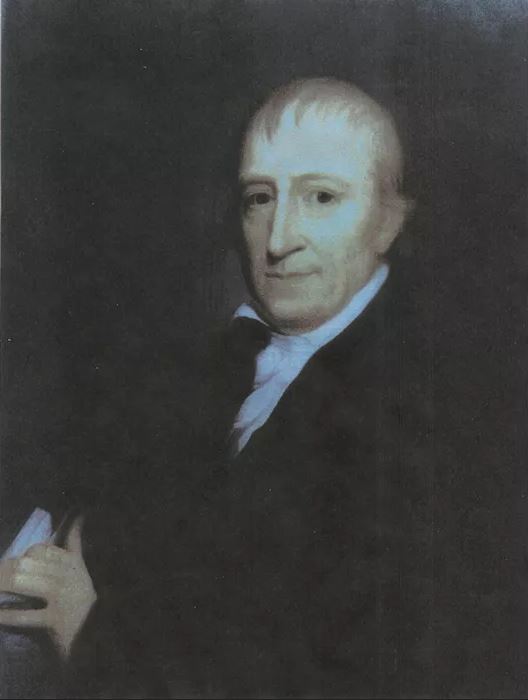
John Hewson, the designer of the first bandana in the American revolution
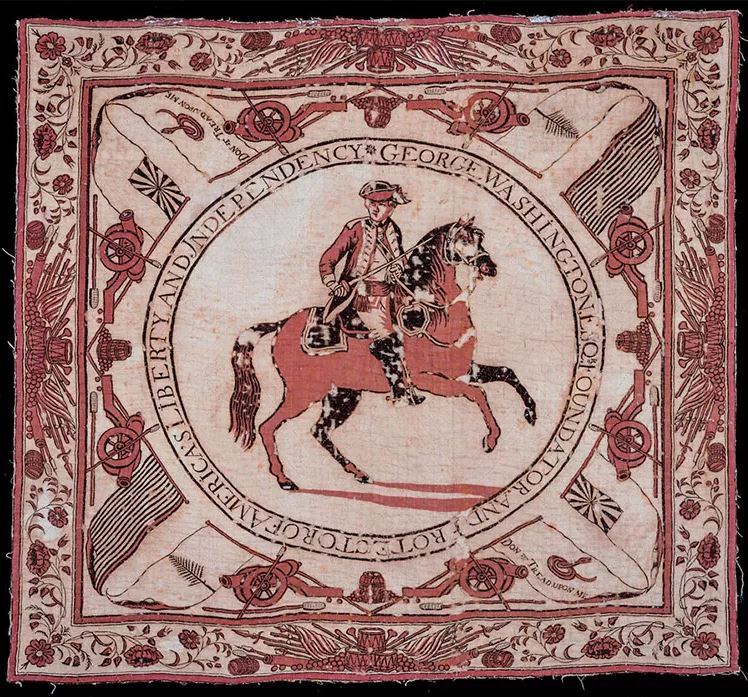
John Hewson’s original bandana design of George Washington on horseback, c. 1780.
Considered the first-ever bandana—at least as we know them today—it would go on to inspire political campaigns for centuries. In the 1950s, this type of political promotion was becoming increasingly popular, as politicians started to print their campaign slogans on similar bandanas for their supporters, peaking with Dwight Eisenhower’s 1952 Win with Ike for President.
Later, the bandana would come to affect advertising and marketing in the fast-changing pop culture landscape that came on the heels of the Industrial Revolution.
As variety, experimentation, and imagination became intrinsic elements in popular entertainment it bled over into new styles of advertising. Many made bandanas to show their affinity for sports teams, musicians or movie stars. Anything from the Yankees to Elvis to promotion of Disney characters, could be found on bandanas, and Kellogg’s cleverly used bandanas as collector’s pieces in order to sell more boxes of cereal. A new marketing strategy was born, and you could tie it around your head.
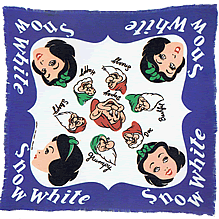
1937 bandana of Snow White, Walt Disney’s
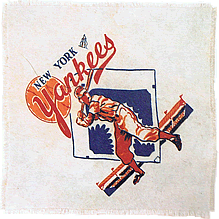
New York Yankees bandana
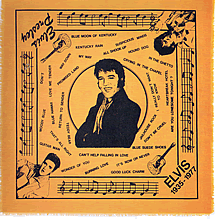
Tribute to Elvis bandana for fans paying homage at Gracelands following his death in 1977
Bandanas in Workwear
After becoming an advertising medium, the bandana became an even more important symbol in the fight for worker’s rights. The West Virginia Coal Miners March of 1921 was one of the largest armed uprisings in labor history and, at the march, over ten thousand United Mine Workers wore red bandanas to demand unions, an event many equate to the popularization of the derogatory term “redneck.”
It was a battle between scarcely armed miners and armed lawmen of Logan County, but President Coolidge called in federal troops to support the strikebreakers. With more than a hundred casualties—mainly from the ranks of the coal miners—and almost a thousand arrests, management came out on top, but the labor movement would spark a change that eventually led to better conditions for union workers all over the country.
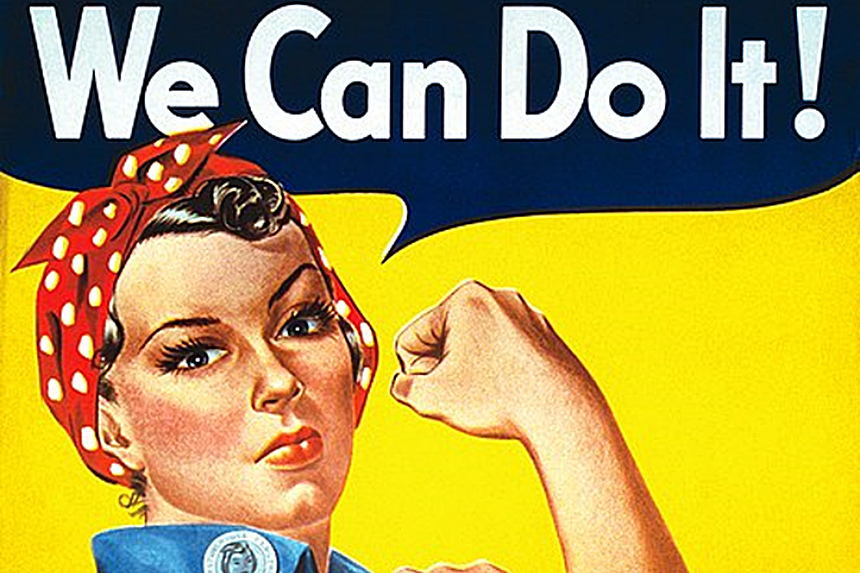
Rosie the Riveter and her iconic bandana headwear
The bandana really came into its own during World War II, as women on the home front entered American factories and used them to tie their long hair back. Due to this, and partly due to John Wayne Westerns, the bandana became an iconic accessory that’s lasted to this day (even weathering the storm of some unfortunate applications, at times getting used as outlaw face protection and as a key piece in the vagrant’s bindle).
In the 70s, the bandana—and its different colors—was used in an entirely different fashion. Implemented by the gay community, the handkerchief code became an easy way to identify not only other gay men but also tell sexual preferences and/or fetishes from potential partners. Different colors and pockets were a quick way to communicate in plain sight with a community that was still largely forced underground.
However, this movement is far different from the affiliation color code implemented by prominent gangs of the 80s, such as the Bloods and Crips, who would show their affiliation by wearing a red or blue bandana, respectively.
Turkey Red and the Mainstream Bandana
Produced for centuries in the east, the Turkey red-dyeing process would later became synonymous with printed cottons in Scotland, and thus the original, mainstream bandana. Brought to Scotland in 1785 by a French entrepreneur, it was then adopted by manufacturers in the Vale of Leven, Dunbartonshire.
It was a both complex and laborious process, involving madder root and alizarin to fix the dye to the cloth, as well as sheep’s dung, bullock’s blood and urine. This admittedly odd combination produced a highly valued color, one that wouldn’t fade with sunlight and washing–aka colorfast. The phenomenon of color fastness was a new and valued concept, but the use of the term wasn’t actually introduced until sometime around 1916.

madder root, a traditional source for red color dye for thousands of years
Due to competition from Europe—production began in Manchester, the Germans developed synthetic dyes and Asian manufacturing scaled their volume — the three biggest companies, William Stirling and Sons, John Orr Ewing and Co. and Archibald Orr Ewing, amalgamated and formed United Turkey Red Co. in 1898. It was a large and successful operation that would go on to exist for almost two hundred years, closing their last factory in 1961.
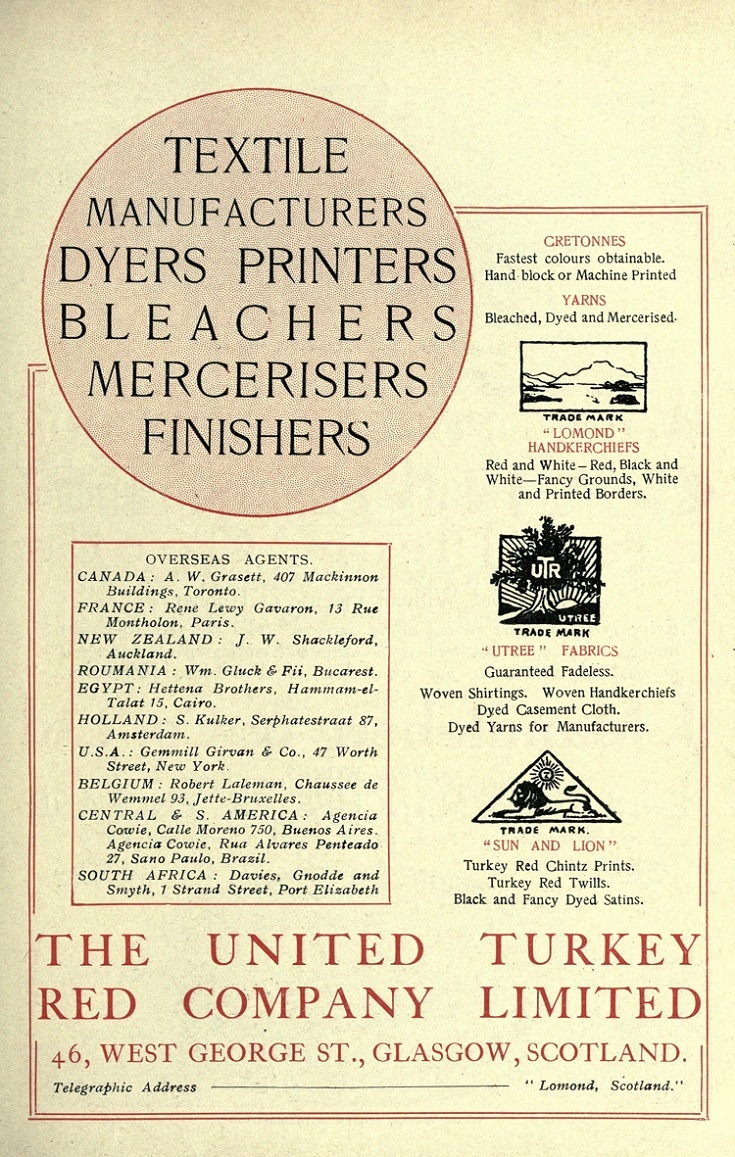
1920s Advertisement for the United Turkey Red Co, image via gracesguide.co.uk
Another famous bandana brand featured at the museum, is the NYC-based Davis and Catterall, which existed from the 1920s to the 1970s. Also known as The Elephant Brand by collectors, because they implemented little elephants on their bandanas, Elephant Brand is widely recognized as the original Americana bandana. Because of this, many of these are sought-after collectors pieces, with price tags depending on age and design, with advertising variations being the most collectible.
Famous for their little elephant logo, which was typically printed next to an inscription saying: “fast color, 100% cotton,” the pictured elephant has gone through a few variations.
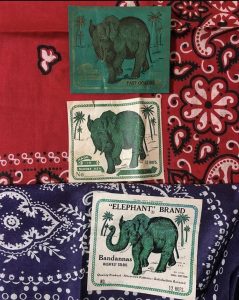
The Elephant brand
During the 50s, the trunk of the elephant, which had originally been facing down (dubbed as “trunk down”), was flipped, so it was turning up (“trunk up”), in order for Elephant to distinguish themselves from the competition. In 1986 a “classic” red/black/white (amongst other colors) bandana was entered into the Cooper Hewitt [Design] Museum, New York, donated by Penelope McClain, also indicating the historical significance of the bandana.
The bandana market has continued to expand to this day, even if it hasn’t necessarily flourished. The little square cloth maintains its versatility as a close-at-hand accessory—both as a headband, necktie or even as a cloth to wipe off your phone screen. But who knew that this simple design would’ve had such a massive impact on so many different cultures.

